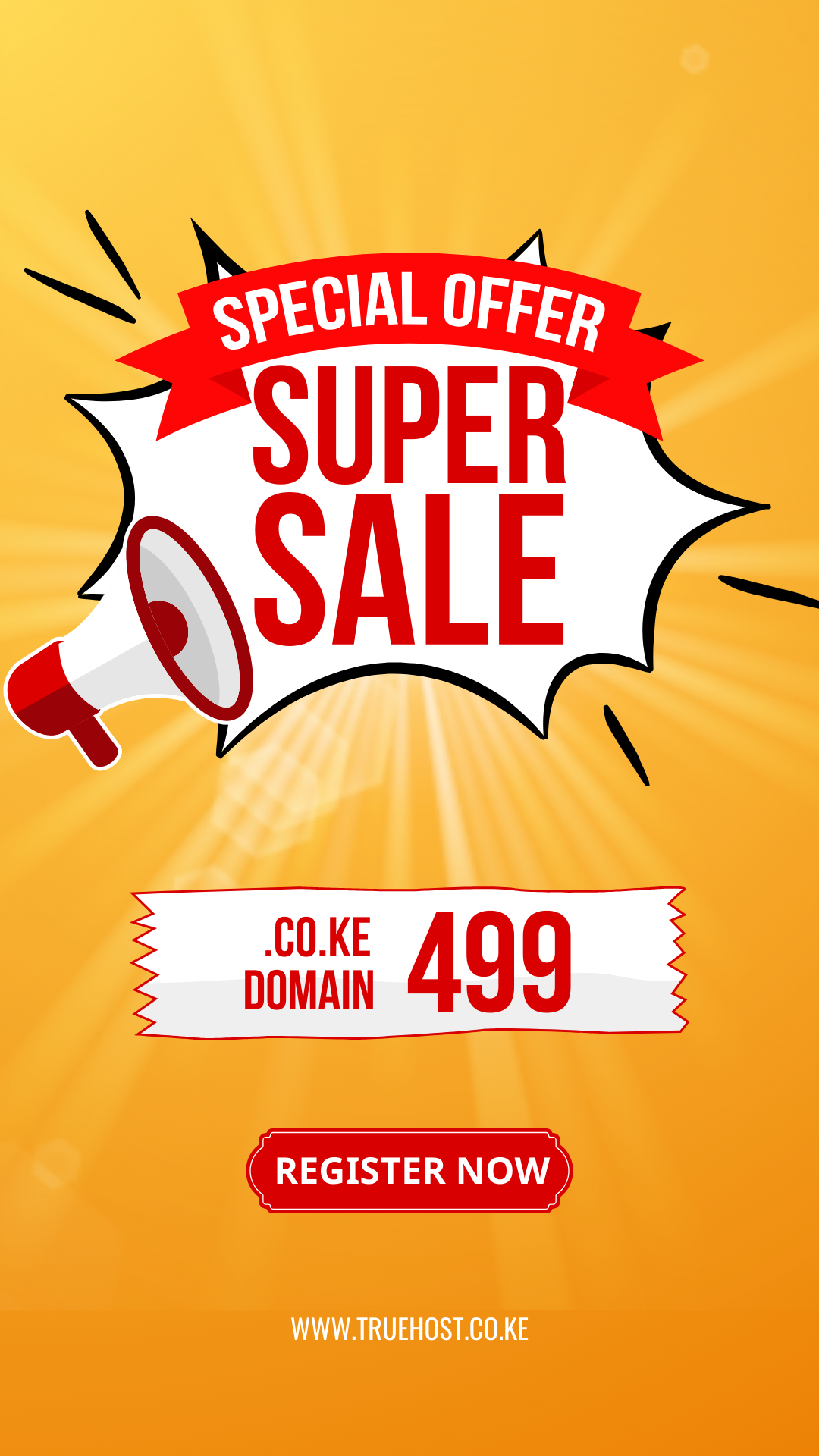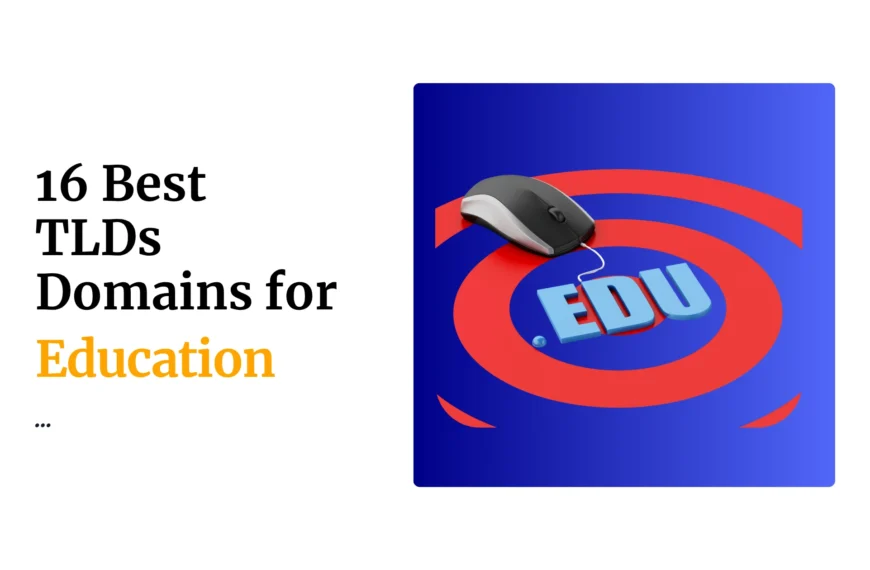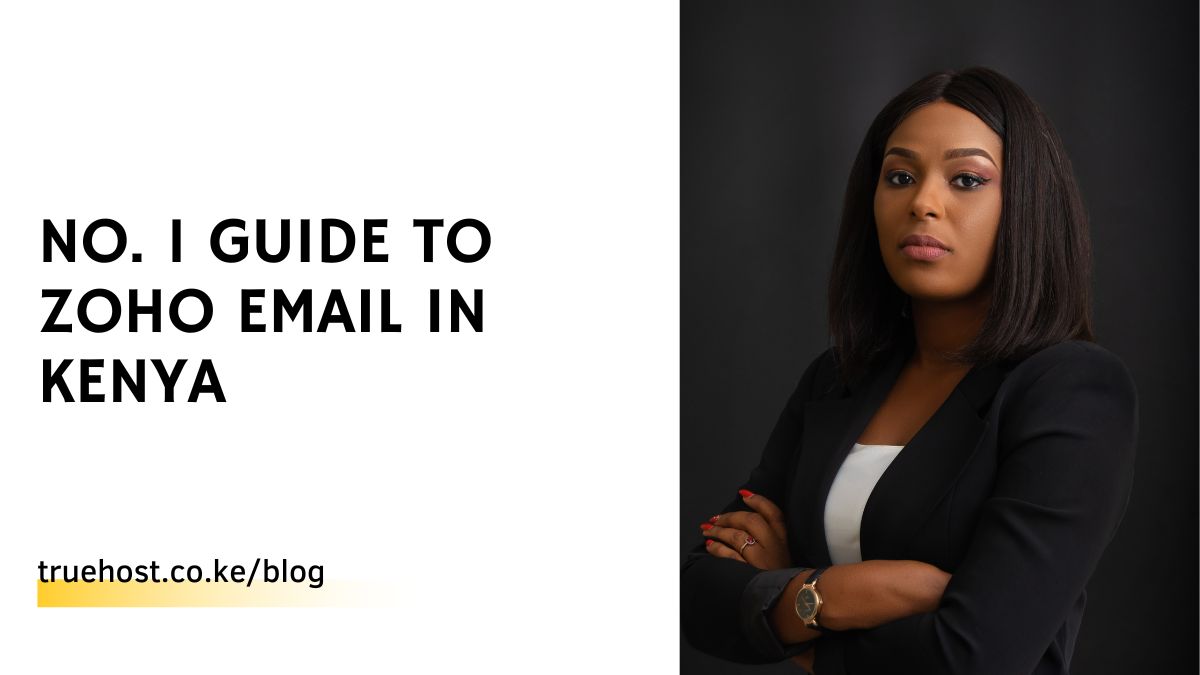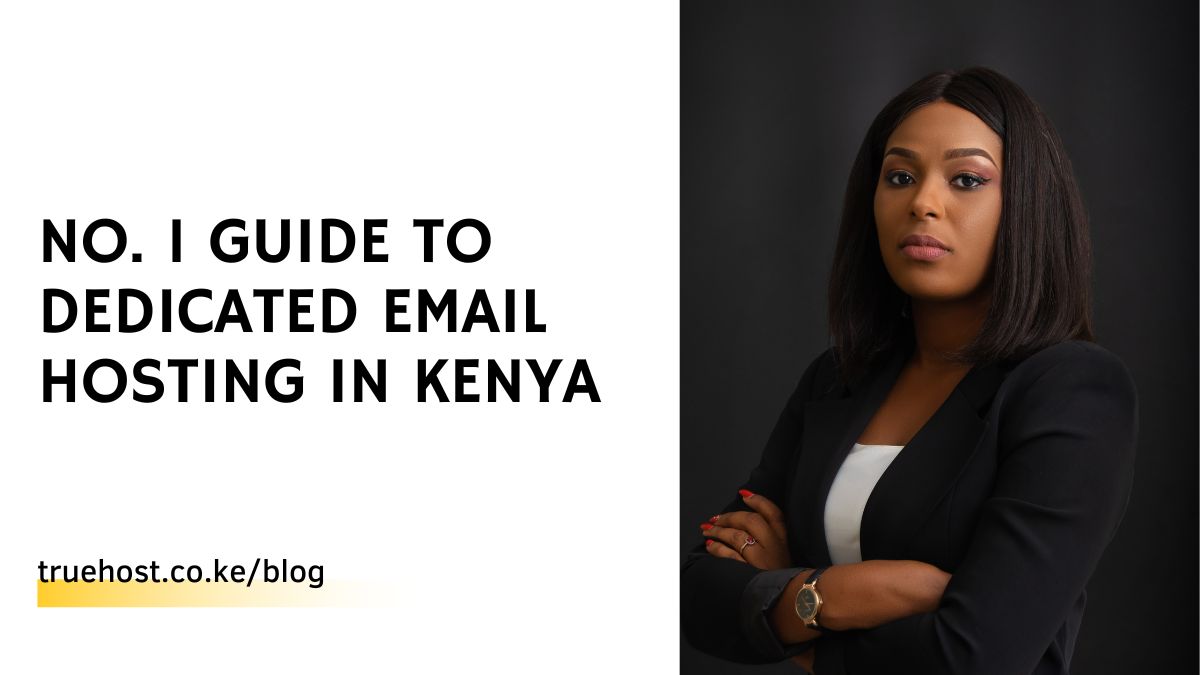Email marketing in Kenya is one of the most powerful tools in a marketer’s toolkit. Used correctly, email can be an extremely effective way to reach out to potential and current customers alike.
In this article, we will explore some tips on how you can create winning email campaigns that will engage your subscribers and get them to take action!
What is an email campaign?
An email campaign is a marketing strategy that involves sending out promotional emails to potential customers.
These series of emails can be used to promote special sales, new products, or even just to keep customers up-to-date on what your business is doing.
To run a successful email campaign, you need to have a good email list full of people who are interested in what you have to say. You also need to create compelling emails that will get people to take action, whether that’s clicking through to your website or making a purchase.
In fact, with a little planning and effort, your email campaigns can be an effective way to reach your target audience and grow your business.
Types of email campaigns you can send
a). The Welcome Email Series
The welcome email is the first in a series of emails that you can send to new subscribers. It’s important to make sure your welcome email makes a great first impression and sets the tone for what’s to come.
Its goal is to introduce your brand and give new subscribers a taste of what you have to offer.
Here’s an example:
Subject: Welcome to our online community!
We’re excited to have you as a member and we can’t wait to get to know you better.
Please take a moment to introduce yourself. Just hit reply and tell us more about you and your goals.
b). The Engagement Email Series
Engagement emails are designed to keep your subscribers engaged with your content.
These types of emails usually contain a personal message, an update on what’s been going on, or a call to action.
By keeping your subscribers engaged, you’re ensuring that they remain interested in what you have to say and are more likely to continue reading your emails.
c). The Promotional Email Series.
Promotional emails are a great way to showcase your best content and offers.
They can be used to drive traffic to your website or blog, increase sales of a product or service, or simply keep subscribers up-to-date on what’s new with your business.
d). The Reactivation Email Series.
As your email list grows, some subscribers will fall behind and even stop opening your emails.
Reactivation emails are designed to reactivate inactive subscribers. If you have been inactive for a while, these emails are a great way to get back into the swing of things.
They usually contain special offers or discounts to entice you to come back. The goal is if the user sees and likes your message or offer, they might become active again and keep opening your emails.
e). The Thank You Email.
The thank you email is a great way to show your appreciation for your subscribers. It is a small gesture that goes a long way in making your subscribers feel valued.
Plus, it’s a great way to build rapport and strengthen your relationship with them.
For example,
Hi {FirstName},
Thank you so much for subscribing to my blog! I really appreciate your support. I hope you enjoy the content.
Sincerely,
Your favorite blogger
f). The Triggered Email Series.
If you’re not familiar with triggered emails, they are simply emails that are sent based on subscriber activity.
In other words, if someone takes a certain action, they will receive a corresponding email. This is an incredibly powerful tool because it allows you to automate your email marketing to a certain degree and make sure that people are getting the most relevant information.
For instance, if a subscriber abandons their shopping cart, they’ll receive a triggered email reminding them to complete their purchase.
g). The Newsletter.
Newsletters are a great way to keep subscribers up-to-date on what’s new with your business.
You can include information about new products, services, or promotions.
This is a great way to keep your customers informed and excited about what’s happening with your business.
h). The Cart Abandonment Campaign.
Cart abandonment emails are designed to help you get your lost sales back and drive up your revenue!
They can be customized to include a message from you, and even include a discount code to incentivize customers to come back and finish their purchase.
For example,
Subject: You left something in your cart!
Hi! We noticed you left something in your cart and we wanted to help you finish your purchase. Use the code ‘FINISH10’ to get 10% off your order now.
What makes a good email campaign?
There are some common elements that can help make an email campaign more effective. Here are some of these qualities.
a). Have a great subject line
A subject line is the first thing a recipient sees when they open your email. It needs to be clear, and concise, and make them want to read more.
The best way to write a great subject line is to keep it short and sweet. Get straight to the point, and make sure your message is clear.
b). Personalize where possible
When you personalize an email, it shows that you care about the recipient. It makes them feel special, and more likely to engage with your message.
c). Keep your email compelling and easy to read
Your email should be interesting and easy to read. No one wants to wade through a wall of text, so make sure your message is clear and concise.
d). Ensure the email is relevant
What does this mean?
Make sure your email is relevant to the recipient. This means sending them information that they will actually find useful or interesting.
For instance, if you are a travel company, sending someone who just booked a trip with you an email about your latest deals is relevant. But, sending them an email about your new line of luggage is not as relevant.
e). Have a goal in mind
Before you send out an email campaign, make sure you have a goal in mind. What do you want to achieve with this campaign?
Do you want more people to sign up for your newsletter? Do you want to increase sales of a particular product? Once you know your goal, it’s easier to create an email that will help achieve it.
f). Make your email mobile-responsive
With more people reading emails on their mobile devices, it’s important to make sure your campaign is optimized for smaller screens. This means using a responsive design and keeping the text and images easy to view on a small screen.
Planning your email campaign in Kenya.
Yes, email campaigns are a great way to reach out to your target audience and promote your product or service.
However, before you can launch an email campaign, you need to do some planning.
Here are a few things to keep in mind when planning your email campaign:
1. Define your goals.
What do you want to achieve with your email campaign? Do you want to increase sales, promote a new product, or simply raise awareness about your brand? Once you know what you want to accomplish, you can develop a strategy to make it happen.
2. Identify your target audience.
Who are you trying to reach with your email campaign? What are their needs and wants? What kind of language will resonate with them? Once you know who your target audience is, you can create messaging that will appeal to them.
3. Decide on the format of your email campaign.
Do you want to send a traditional text-based email, or something more visually appealing like an HTML email? Once you know what kind of email would work best for your goals and target audience, you can start creating it.
4. Develop compelling content.
Your email content needs to be engaging and relevant to your target audience.
It should also include a call-to-action (CTA) that encourages recipients to take the desired action, whether it’s clicking through to your website or making a purchase.
5. Test, test, test!
Before sending out your entire campaign, it’s important to test how everything looks by sending yourself (or a small group) a “test” version first.
This way, you can make sure all the links are working properly and there are no typos in the message.
Writing great email copy.
Just because EMAIL is easy to use doesn’t mean that everyone knows how to write great email copy.
In fact, many people struggle with writing emails that are clear, concise, and get the point across without sounding like a broken record.
If you’re one of those people who struggle with writing great email copy, don’t despair.
Help is on the way. I will introduce you to 5 proven email writing techniques that will make your emails more effective. By using these techniques, you can learn how to write great email copy in a way that communicates with ease and clarity.
So let s get started!
1. Nail the subject line
Your email subject line is your first—and maybe only—chance to make a good impression on your readers. So it’s no surprise that a lot of people agonize over what to write.
But there are a few things you can do to make sure your subject lines are engaging and get opened.
First, focus on using keywords that are relevant to your topic and will resonate with your audience. If you’re not sure what keywords to use, try looking at some of the most popular search terms related to your topic.
Second, keep it short and sweet. Longer subject lines tend to get cut off in users’ inboxes, so aim for something around 50 characters or less.
Above all, test out different subject lines to see what works best for your audience.
Even if you are not able to track the results, seeing which subject lines are getting opened is a good indicator of how well they are working.
2. Get personal.
When it comes to email copy, getting personal can be a great way to connect with your readers.
After all, we all like to feel like we’re being spoken to directly. And when you use personal pronouns like “I” and “you,” it really does feel like a conversation.
Plus, there are some real benefits to using a more personal tone in your email copy.
For one thing, it can make your message more relatable. And when your readers feel like they can relate to you, they are more likely to keep reading (and even act on what you say).
Another benefit of getting personal is that it can help build trust. When you share a little bit about yourself, your readers will start to see you as a real person—someone they can trust.
3. Tell a story in the body copy.
Stories engage readers and inspire action. They are the bread and butter of great email copy.
When writing a story for email, keep the following in mind: who is your audience, what do they want to hear, and how can you make your story engaging and inspiring?
Your audience should be at the forefront of your mind when crafting a story for email. What will resonate with them? What will inspire them to take action? Keep your audience in mind and craft a tale that will speak to them.
Make sure your story has a beginning, middle, and end. It should be engaging from start to finish.
And most importantly, it should inspire your reader to take action. You want to tell a story that is relevant, emotional, and gives your reader a reason to take action.
What will work for one audience may not work for another. Personalization is key to creating successful email marketing campaigns as we’ve already talked about.
What does this mean for you?
It will take time to understand your audience sufficiently and to tailor your stories for them.
Crafting a story is not just about creating it but also about understanding your audience. Only then can you create a story that is truly resonant.
4. Avoid spam trigger words when possible.
The last thing you want is for your email to end up in the recipient’s spam folder. So, how do you avoid it?
The answer’s simple: don’t use spam trigger words.
Trigger words are what Gmail and other major email providers use to determine whether or not an email is a spam.
And turns out, there are a few examples of spam trigger words that can send your email straight to the spam folder. These include things like “free,” “100% guaranteed,” and “win.”
To avoid these triggers, try to use more specific language in your email copy.
For example, instead of saying “100% guaranteed,” you could say “our satisfaction guarantee.” This will help your email avoid being caught by spam filters.
Read also: How to configure email filtering in cpanel.
5. Talk about benefits, not features.
When it comes to email copy, it’s important to focus on the benefits that your product or service can provide, rather than just listing its features.
After all, what good is a feature if it doesn’t provide some sort of benefit?
For example, let’s say you’re selling a new type of toothbrush that has bristle patterns that are said to be more effective at cleaning teeth.
Rather than simply saying “our toothbrush has different bristle patterns,” try something like “our toothbrush is designed to clean your teeth more effectively, so you can feel confident about your smile.”
It’s a small change, but one that can make a big difference in how your email copy is received.
So next time you’re crafting an email, take a step back and ask yourself: what benefit does this offer my reader? Then, use that information in your copy to ensure the value of your product or service is made clear.
Measuring the success of your email campaign
To this far, you’ve created an effective campaign. But there’s one piece missing; measuring results!
You can measure the success of your email campaign in several ways.
One way to do this is by determining how many people open and click on links in your email message.
You should also look at whether or not people unsubscribe from your list after receiving one of your emails.
And you can ask customers directly for feedback about their experience with your email campaigns.
There are other things like; unsubscribe rate measures how many people unsubscribed from your email list after receiving your email. The complaint rate measures how many people marked your email as spam.
In brief,
Email campaigns are a great way to connect with customers and promote your business. However, success is not guaranteed. To create a winning email campaign, consider the following:
- Define your goals. What do you want to achieve with your campaign? More sales? More website traffic? Better customer engagement?
- Research your audience. Who are you sending your emails to? What do they want to see? What kind of language will resonate with them?
- Create compelling content. Your email should have a clear purpose and provide value to the reader. Include a strong call to action that encourages them to take the next step.
- Test, test, test. Before sending out your campaign to everyone on your list, try it out on a smaller group first. This will help you catch any errors and make necessary adjustments.
Read also: How To Get a Custom And Personalized Email Address.
 Domain SearchInstantly check and register your preferred domain name
Domain SearchInstantly check and register your preferred domain name Web Hosting
Web Hosting cPanel HostingHosting powered by cPanel (Most user friendly)
cPanel HostingHosting powered by cPanel (Most user friendly) KE Domains
KE Domains Reseller HostingStart your own hosting business without tech hustles
Reseller HostingStart your own hosting business without tech hustles Windows HostingOptimized for Windows-based applications and sites.
Windows HostingOptimized for Windows-based applications and sites. Free Domain
Free Domain Affiliate ProgramEarn commissions by referring customers to our platforms
Affiliate ProgramEarn commissions by referring customers to our platforms Free HostingTest our SSD Hosting for free, for life (1GB storage)
Free HostingTest our SSD Hosting for free, for life (1GB storage) Domain TransferMove your domain to us with zero downtime and full control
Domain TransferMove your domain to us with zero downtime and full control All DomainsBrowse and register domain extensions from around the world
All DomainsBrowse and register domain extensions from around the world .Com Domain
.Com Domain WhoisLook up domain ownership, expiry dates, and registrar information
WhoisLook up domain ownership, expiry dates, and registrar information VPS Hosting
VPS Hosting Managed VPSNon techy? Opt for fully managed VPS server
Managed VPSNon techy? Opt for fully managed VPS server Dedicated ServersEnjoy unmatched power and control with your own physical server.
Dedicated ServersEnjoy unmatched power and control with your own physical server. SupportOur support guides cover everything you need to know about our services
SupportOur support guides cover everything you need to know about our services








